Two parallel resistanceless rails are connected by an inductor or inductance L at one end as shown in figure. A magnetic field B exists in the space which is perpendicular to the plane of the rails. Now a conductor of length l and mass m is placed transverse on the rail and given an impulse J towards the rightward direction. Then select the corrent option(s).
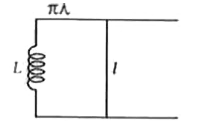
velocity of the conductor is half of the initial velocity after a displacement of the conductor d=√3J2L4B2l2m
velocity of the conductor is half of the initial velocity after a displacement of the conductor d=√3J2LB2l2m
current flowing through the inductor at the instant when velocity of the conductor is half of the initial velocity is i=√3J24Lm
current flowing through the inductor at the instant when velocity of the conductor is half of the initial velocity is i=√3J2mL
The correct Answer is:A, C
L=didt=Bvl
⇒∫di=BlL∫vdt⇒t⇒i=BlLx ….(i)
F=ma⇒−iBl=mvdvdx
⇒−B2l2xL=mvdvdx⇒−B2l2mL∫d0xdx=∫v0/2v0vdv
⇒−B2l2d22mL=−3v208[v0=Jm]⇒d=√3J2L4B2l2m
Put x = d in (i), i=BlL√3J2L4B2l2m=√3J24Lm
Topper's Solved these Questions
- BOOK - MTG-WBJEECHAPTER - ELECTROMAGNETIC INDUCTION AND ALTERNATING CURRENT EXERCISE - WB JEE Previous Years Questions14videos
ELECTROMAGNETIC INDUCTION AND ALTERNATING CURRENT
- BOOK - MTG-WBJEECHAPTER - ELECTROMAGNETIC INDUCTION AND ALTERNATING CURRENT EXERCISE - WB JEE WORKOUT (Category 2 : Single Option Correct Type)15videos
ELECTROMAGNETIC INDUCTION AND ALTERNATING CURRENT
- BOOK - MTG-WBJEECHAPTER - CURRENT ELECTRICITY EXERCISE - WB JEE PREVIOUS YEARS QUESTIONS21videos
CURRENT ELECTRICITY
- BOOK - MTG-WBJEECHAPTER - ELECTROMAGNETIC WAVES EXERCISE - WB JEE WORKOUT (CATEGORY 3 : ONE OR MORE THAN ONE OPTION CORRECT TYPE)10videos
ELECTROMAGNETIC WAVES
Similar Questions
Two parallel resistanceless rails are connected by an inductor of inductance L at one end as shows in Fig. A magnetic field B exists in the space which is perendicular to the plane of the rails. Now a conductor of length l and mass m is placed transverse on the rail and given an inpulse J toward the rightward direction. Then choose the correct option (S).
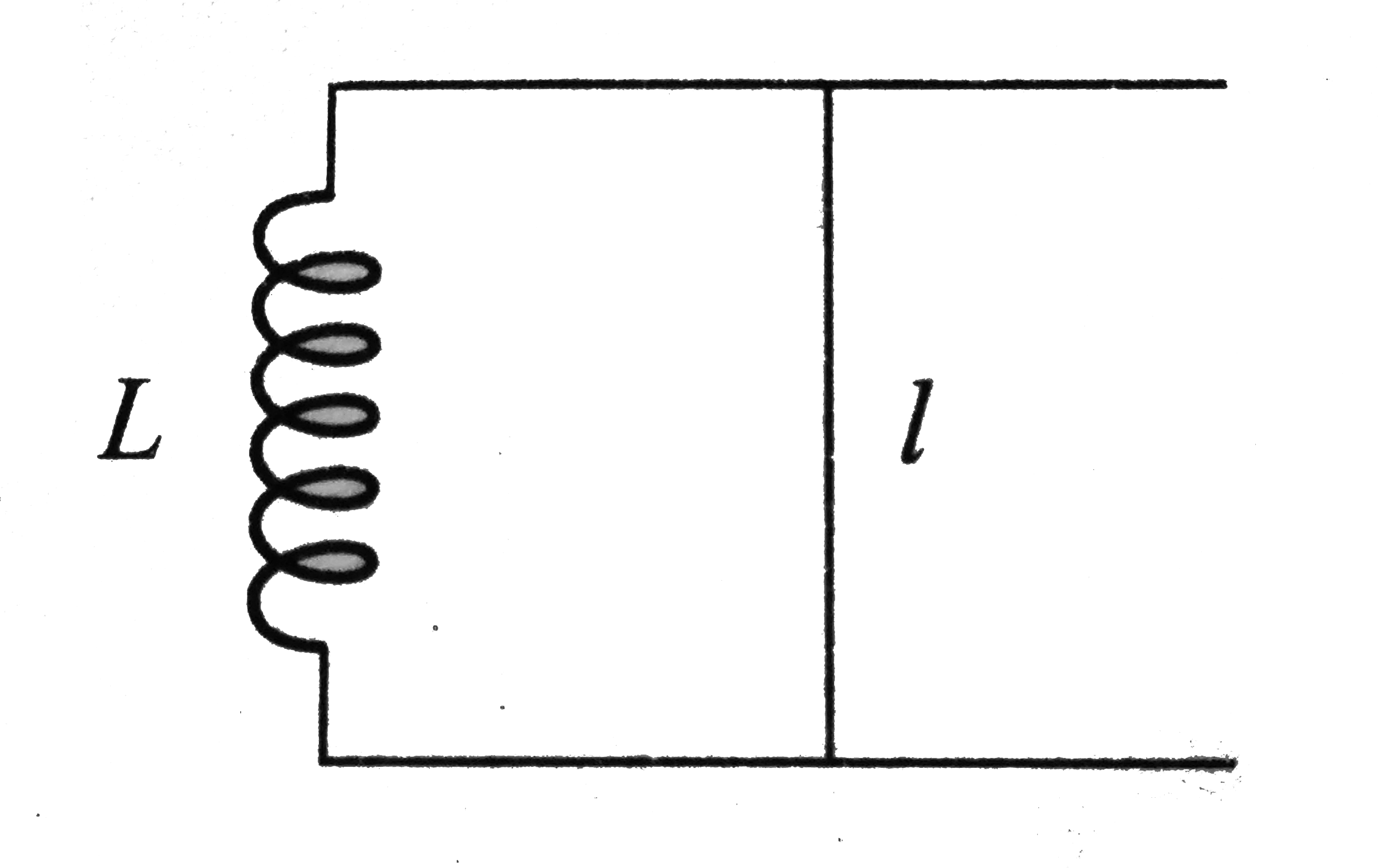 View Solution
View SolutionShows a wire sliding on two parallel, conducting rails placed at a separaton l. A magnetic feld B exists in a direction perpendicular to the plane of the rails. What force is necessary to keep the wire moving at a constatn velocity v ?
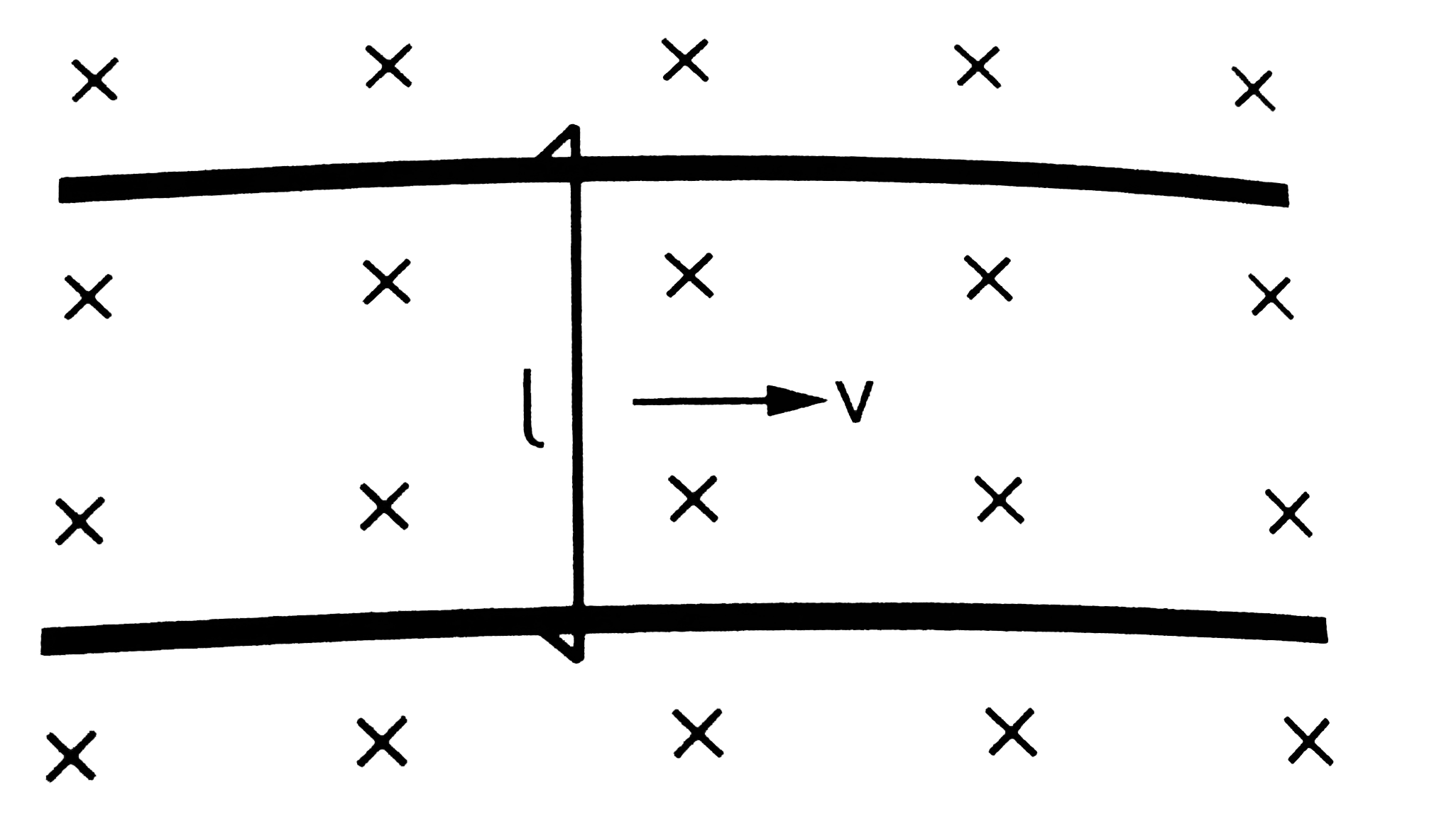 View Solution
View Solution
Knowledge Check
- Question 1 - Select One or More
Two parallel resistanceless rails are connected by an inductor of inductance L at one end as shows in Fig. A magnetic field B exists in the space which is perendicular to the plane of the rails. Now a conductor of length l and mass m is placed transverse on the rail and given an inpulse J toward the rightward direction. Then choose the correct option (S).
 AVelocity of the conductor is half of the initial velocity after a displaacement of the conductor d=√3J2L4B2l2mBCurrent flowing through the inductor at the instant when velocity of the conductor is half of the initial velocity is i=√3J24LmCVelocity of the conductor is half of the initial velocity after a displacement of the conductor d=√3J2LB2l2mDCurrent flowing through the inductor at the instant when velocity of the conductor is half of the initial velocity is i=√3j2mL
AVelocity of the conductor is half of the initial velocity after a displaacement of the conductor d=√3J2L4B2l2mBCurrent flowing through the inductor at the instant when velocity of the conductor is half of the initial velocity is i=√3J24LmCVelocity of the conductor is half of the initial velocity after a displacement of the conductor d=√3J2LB2l2mDCurrent flowing through the inductor at the instant when velocity of the conductor is half of the initial velocity is i=√3j2mL - Question 2 - Select One
A conducting wire xy of lentgh l and mass m is sliding without friction on vertical conduction rails ab and cd as shown in figure. A uniform magnetic field B exists perpendicular to the plane of the rails, x moves with a constant velocity of
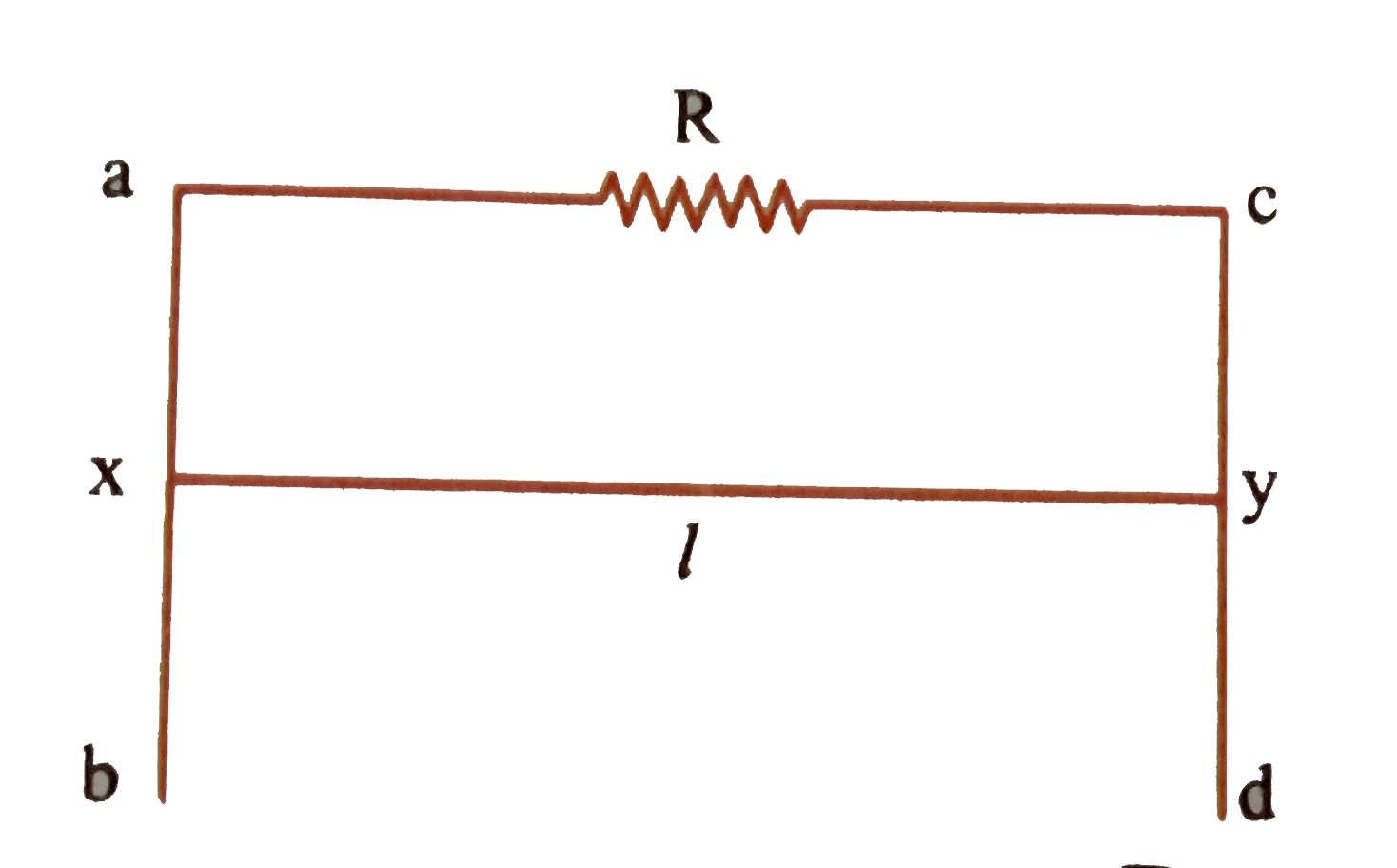 AmgRBlBmgRBl2CmgRB2l2DmgRB2l
AmgRBlBmgRBl2CmgRB2l2DmgRB2l - Question 3 - Select One or More
A copper wire ab of length l, resistance r and mass m start sliding at t=0 down a smooth, vertical, thick pair of connected conducting rails as shown in figure. A uniform magnetic field B exists in the space in a direction perpendicular to the plane of the rails which options are correct .
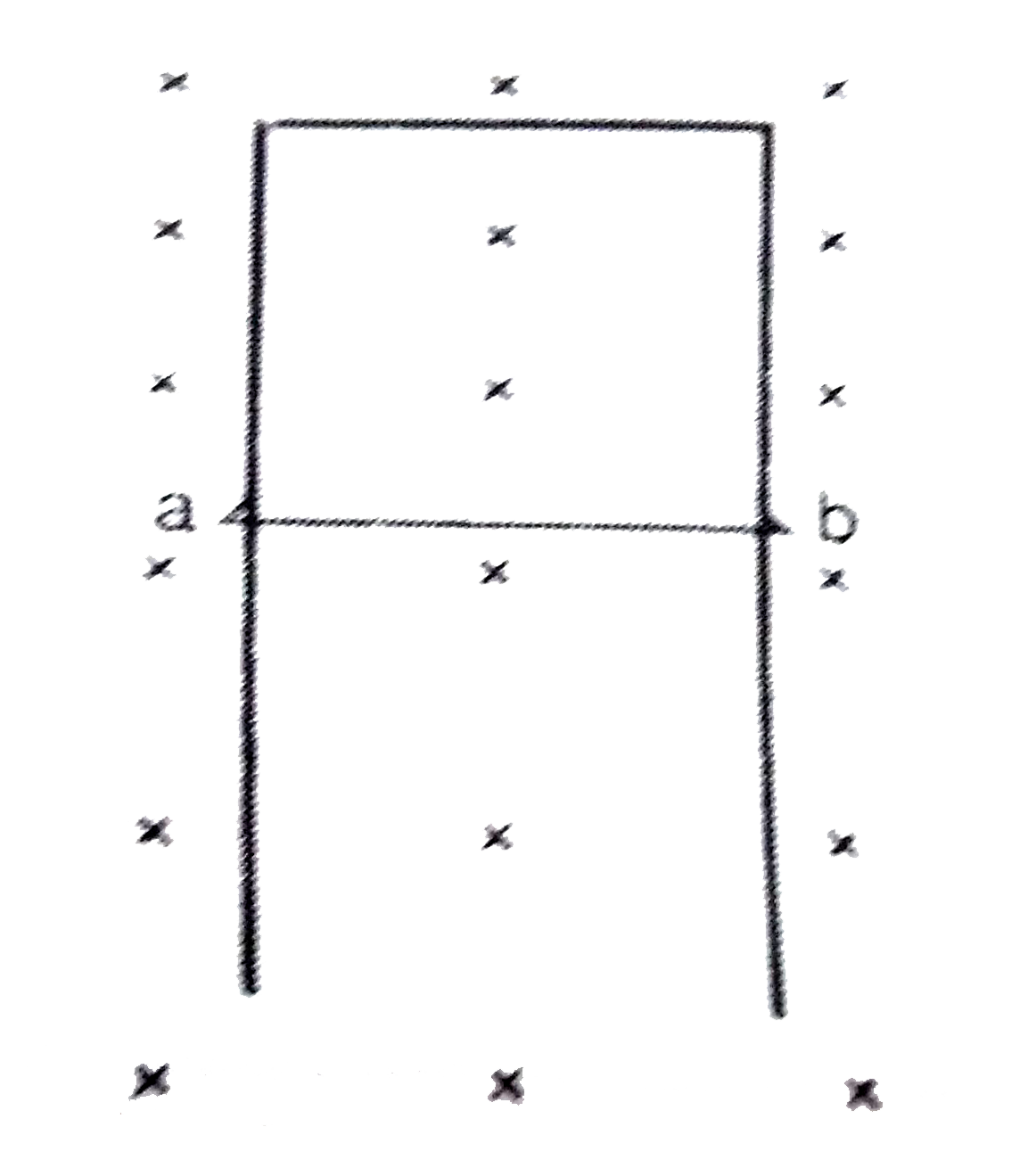 AThe magnitude and direction of the induced current in the wire when speed of the wire v is vBlr, a to bBThe downward acceleration of the wire at this instant g−B2l2mrvCThe velocity of the wire as a function of time vm(1−e−gt/vm),(wherevm=mgrB2l2)DThe displacement of the wire as a function of time vmt−v2mg(1−e−gt/vm),(wherevm=mgrB2l2)
AThe magnitude and direction of the induced current in the wire when speed of the wire v is vBlr, a to bBThe downward acceleration of the wire at this instant g−B2l2mrvCThe velocity of the wire as a function of time vm(1−e−gt/vm),(wherevm=mgrB2l2)DThe displacement of the wire as a function of time vmt−v2mg(1−e−gt/vm),(wherevm=mgrB2l2)
A conducting wire xy of lentgh l and mass m is sliding without friction on vertical conduction rails ab and cd as shown in figure. A uniform magnetic field B exists perpendicular to the plane of the rails, x moves with a constant velocity of
 View Solution
View SolutionA conducting wire xy of lentgh l and mass m is sliding without friction on vertical conduction rails ab and cd as shown in figure. A uniform magnetic field B exists perpendicular to the plane of the rails, x moves with a constant velocity of
 View Solution
View SolutionFigure shows a wire sliding on two parallel, conducting rails placed at a separation L . A magnetic field B exists in a direction perpendicular to the plane of the rails. What force is necessary to keep the wire moving at a constant velocity V ?
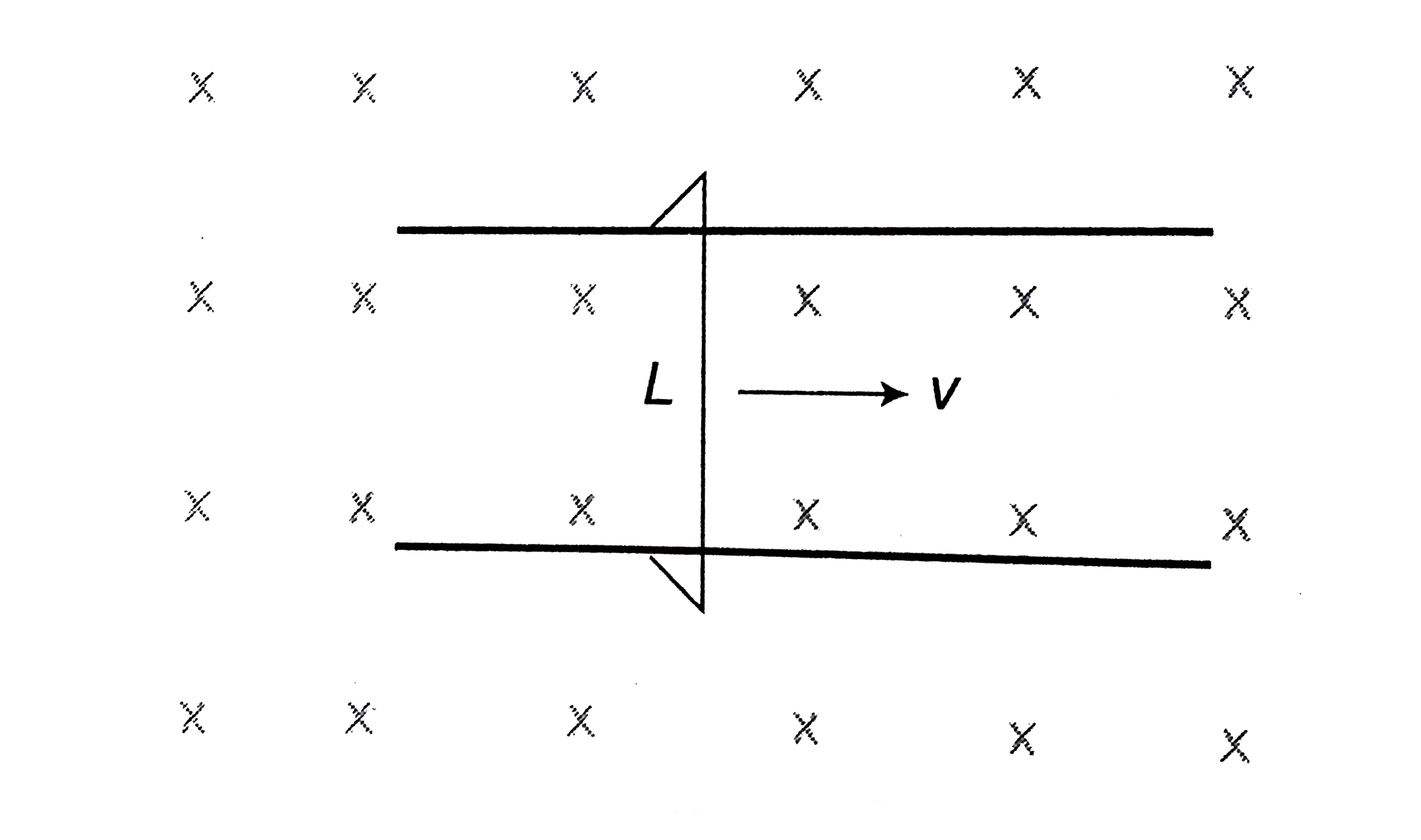 View Solution
View SolutionFigure shows a wire sliding on two parallel, conducting rails placed at a separation L . A magnetic field B exists in a direction perpendicular to the plane of the rails. What force is necessary to keep the wire moving at a constant velocity V ?
 View Solution
View SolutionA copper wire ab of length l, resistance r and mass m starts sliding at t=0 down a smooth, vertical, thick pair of connected condcuting rails as shown in figure.A uniform magnetic field B exists in the space in a direction perpendicular to the plane of the rails which options are correct.
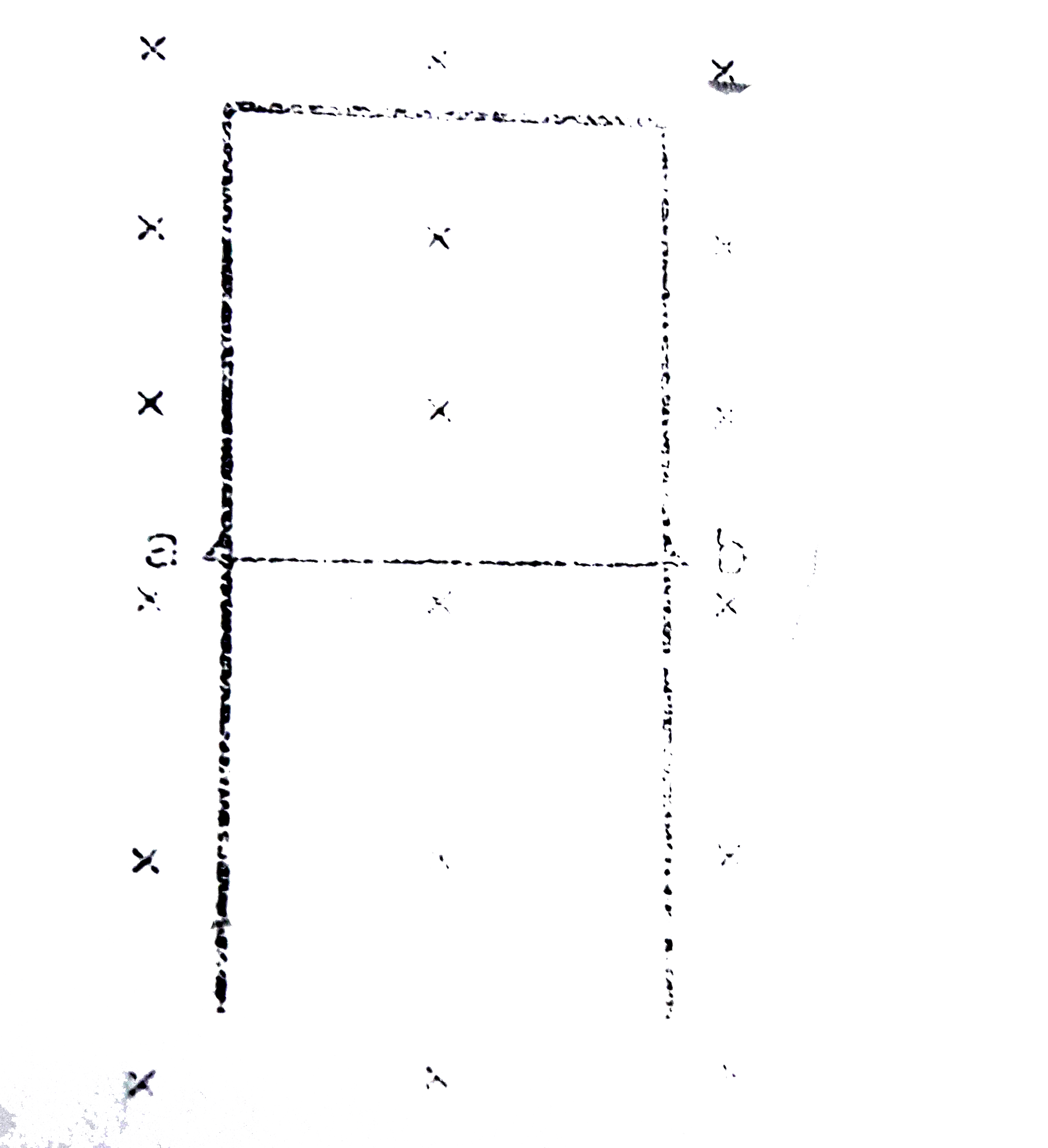 View Solution
View Solution

